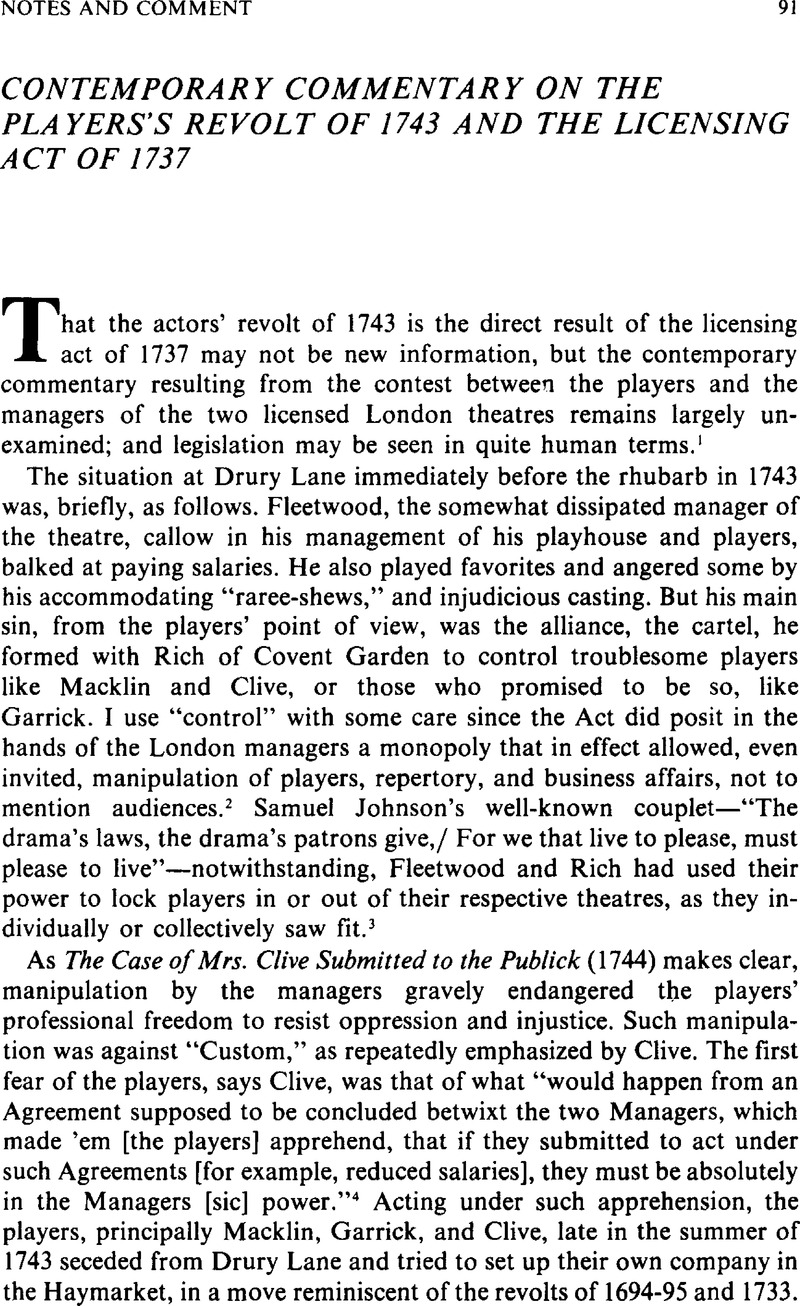No CrossRef data available.
Published online by Cambridge University Press: 07 July 2009

1 I list other results of the licensing act of 1737 in “Some Research Opportunities in Eighteenth-Century English Drama,” Indiana English Journal, 6, No. 1 (Fall 1971), 33–38Google Scholar.
2 For general background, the following studies are most useful: Crean, P. J., “The Stage Licensing Act of 1737,” MP, 25 (08 1937–May 1938), 239–255Google Scholar; and Nicholson, Watson, The Struggle for a Free Stage in London (Boston, 1906; rpt. New York, 1966)Google Scholar.
3 Hughes, Leo, The Drama's Patrons (Austin, 1971)Google Scholar, outlines the limits of managerial control over 18th-century audiences.
4 (London, 1744), p. 9. Reprinted, with Introduction by Richard C. Frushell, The Augustan Reprint Society, Publication Number 159 (UCLA, William Andrews Clark Memorial Library, 1973). I re-use here several concepts and quotes from my ARS introduction for framing purposes; however, most of the contemporary commentary I quote below has not, so far as I know, heretofore been noted in the context I suggest.
5 Ibid., Introduction.
6 (London, 1743) [erroneously dated 1713], pp. 11, 19.
7 (London, 1743), p. 11.
8 Theatrical Correspondence in Death, pp. 14, 15.
9 The Case Between the Managers, p. 13.
10 The Dramatic Congress, (London, 1743), p. 12Google Scholar.
11 (London, 1743), p. 14.
12 (London, 1743), pp. 22, 43.
13 (London, 1744), pp. 6–7.
14 (London, 1744), p. 16.
15 Queries upon Queries, To be Answer'd by the Male-content Players (London, 1743)Google Scholar.
16 This note is condensed from a paper delivered at the Rocky Mountain MLA meeting in October 1973.